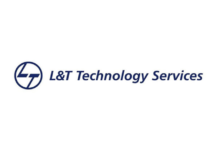
Balancing conflicting priorities across departments, managing expectations, and fostering alignment required a strategic and empathetic approach.
This is an exclusive interview series conducted by the Editor Team of The Mainstream with Mr. Suresh Vijayaraghavan, CTO at THG Publishing Pvt Ltd (The Hindu Group).
How did you plan your career path to be a successful Technology Leader?
I began my career as an Electronics Engineer in 1988, embarking on a journey that would eventually lead me to become a successful Technology Leader. From the very beginning, I recognized that thriving in this role required a blend of technical expertise, leadership skills, strategic thinking, and business acumen. To achieve this, I focused on building a strong technological foundation, a commitment that became a cornerstone of my professional growth.
One significant advantage of my generation was witnessing the rapid evolution—and revolution—of information technology. This unique timing allowed me to master core aspects across the entire IT spectrum, giving me a comprehensive understanding of the domain. I embraced continuous learning, consistently upgrading my skills through online courses, certifications, and workshops. This habit of lifelong learning, combined with a natural inclination towards emerging technologies, enabled me to stay ahead of the curve in a constantly changing field.
As part of my career planning, I sought to gain diverse experience across various roles. This approach not only broadened my technical capabilities but also helped me develop critical soft skills, such as communication, teamwork, and problem-solving. Recognizing the importance of aligning technology with business objectives, I pursued an MBA in Information Technology Management from the University of Leicester (UK). This education equipped me with a solid foundation in business fundamentals and enhanced my ability to connect business goals with technology strategies.
My career took a pivotal turn when I chose to work as an independent consultant for over a decade. During this period, I not only deepened my expertise but also had the privilege of advising numerous businesses on tailored technology strategies. This role honed my ability to think strategically, align technology with organizational goals, and deliver measurable value.
Throughout my journey, I have remained committed to leading with vision—whether by inspiring teams, driving change, or fostering innovation. My approach to leadership has always been centered on empowering others and creating an environment where ideas flourish and growth becomes inevitable. This journey reflects not just a career path, but a deliberate and passionate pursuit of excellence as a Technology Leader.
- What challenges you faced in your career path and how did you overcome them?
Throughout my career, I have encountered several challenges at different stages, each requiring a unique approach to overcome. In the earlier part of my career, one key challenge was influencing outcomes for the better without being the decision-maker. I often found myself needing to present well-researched facts and insights to persuade others. At times, this also meant mentoring colleagues to equip them with the knowledge required to understand and appreciate the subject being discussed. I discovered that a powerful strategy was making others feel that the idea originated from them—a collaborative approach that fostered buy-in and led to better outcomes.
When I transitioned to managing teams, the rapidly evolving technology landscape posed a significant challenge. Ensuring that my team’s knowledge remained current and relevant was critical. To address this, I developed a structured, process-driven approach to competency development. This framework was not static; it evolved over time to adapt to new tools, technologies, and methodologies, ensuring my teams stayed ahead of the curve.
As I advanced to technology leadership roles, I faced the complex challenge of navigating organizational change. Balancing conflicting priorities across departments, managing expectations, and fostering alignment required a strategic and empathetic approach. My solution was to create a clear vision diagram that outlined the organization’s overarching goals and to align individual projects to this vision. This provided a roadmap that helped manage expectations while ensuring that all efforts contributed to a unified direction.
Each of these challenges taught me valuable lessons and honed my ability to lead effectively, adapt to change, and drive meaningful outcomes in a dynamic environment.
- What are the challenges faced by Technology Leaders today while implementing digital technologies? How can Technology Leaders overcome the challenges faced?
Today the pace of technological advancement makes it difficult to keep up with emerging tools, frameworks, and platforms. Leader’s risk investing in technologies that may become obsolete or fail to deliver anticipated value. Leaders must manage them by establishing a culture of continuous learning, piloting new technologies before full-scale implementation, and leveraging partnerships with vendors and startups.
Organizational inertia and resistance from employees or stakeholders can slow adoption. This can delay projects, reduce efficiency, and lower morale. Leaders must institutionalise effective change management strategies, including clear communication, stakeholder engagement, and training programs to demonstrate the benefits of new technologies.
Organizations have existing legacy systems that are difficult to integrate with modern digital technologies. Developing phased migration plans, leveraging APIs and middleware for integration, and prioritizing systems modernization are some of the approaches that will help.
Implementing digital technologies increases exposure to cybersecurity threats and privacy concerns. Embedding security into every stage of the digital transformation process, implementing robust data governance, and staying compliant with global regulations are critical.
Talent Shortage and Skill Gaps to implement and manage new digital technologies. We must invest in upskilling and reskilling existing teams as they would already posses the knowledge of the domain and existing systems. While it might look easier to outsource and get done, dependence on third-party vendors for technology implementation or maintenance can create risks.
Digital transformations often require significant financial investment, which may be constrained by organizational budgets. Technology leaders must demonstrate ROI through pilot projects, aligning technology investments with business goals, and exploring cost-effective solutions like cloud computing and open-source tools.
Last but not the least – Defining and tracking the success of digital transformation initiatives are very critical. It is important to establish key performance indicators (KPIs) aligned with organizational goals and conducting regular performance reviews.
- Any best practices/industry trends/advice you would like to suggest to fellow Technology Leaders for their successful professional journeys?
In today’s fast-paced and complex technology landscape, thriving as a Technology Leader requires a strategic mindset, adaptability, and a strong focus on aligning technology initiatives with organizational goals. Here are some actionable advice that I believe can help navigate a successful professional journey:
- Embrace Continuous Learning
- Lead Change Management Effectively
- Modernize Legacy Systems Thoughtfully
- Prioritize Cybersecurity and Data Privacy
- Cultivate a Skilled and Agile Workforce
- Balance Innovation with Business Goals
- Manage Resources Strategically
- Foster Collaboration and Vendor Partnerships
- Measure Success Continuously
- Lead with Vision and Empathy
By adopting these practices and staying attuned to industry trends, Technology Leaders can not only overcome challenges but also create a lasting impact within their organizations. The journey is as much about inspiring and empowering others as it is about driving technological advancements.
Also read: Viksit Workforce for a Viksit Bharat
Do Follow: The Mainstream formerly known as CIO News LinkedIn Account | The Mainstream formerly known as CIO News Facebook | The Mainstream formerly known as CIO News Youtube | The Mainstream formerly known as CIO News Twitter
About us:
The Mainstream formerly known as CIO News is the premier platform dedicated to delivering the latest news, updates, and insights from the CIO industry. As a trusted source in the technology and IT sector, we provide a comprehensive resource for executives and professionals seeking to stay informed and ahead of the curve. With a focus on cutting-edge developments and trends, The Mainstream formerly known as CIO News serves as your go-to destination for staying abreast of the rapidly evolving landscape of technology and IT. Founded in June 2020, The Mainstream formerly known as CIO News has rapidly evolved with ambitious growth plans to expand globally, targeting markets in the Middle East & Africa, ASEAN, USA, and the UK





